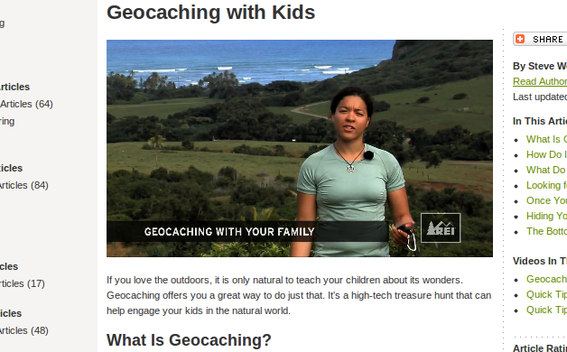Content marketing seeks to publish high-quality content to engage prospects, earn business, and create repeat customers.
In the Internet age, anyone — private or commercial — can publish articles, essays, white papers, newsletters, audio podcasts, games, or videos that have the potential to reach an audience of millions.
Consider the case of Tommy Jordan, a North Carolina man, who responded to his teen-aged daughter’s public and disrespectful Facebook rant, by posting a YouTube video that culminated with Jordan destroying the girl’s laptop with a .45-caliber handgun. The video had received more than 30 million views on YouTube at the time of writing. Jordan’s video also generated international news coverage and comments from dozens of pundits arguing for or against his form of parenting.
While ecommerce marketers will probably want to avoid the controversy associated with Jordan’s post, it is a recent example of the Internet’s ability to transform just about anyone or anything into a mass-market publisher.
1. Focus on Quality, Use Professionals
Focus on creating quality content to help kickstart a content marketing campaign. Internet users have many choices for online information and entertainment. The key to standing out in the sea of available blog posts, podcasts, tweets, and videos is to aim for superiority.
This does not necessarily mean superior production quality — for example Jordan’s viral video is of a relatively ordinary or even low production quality — nor does it mean being outrageous, but rather it means adding real value.
For example, consider REI’s article and associated videos about geocaching with kids. The article itself is grammatically correct, relatively well written, and very informative. There are three accompanying videos that explain geocaching etiquette and tips for locating a cache.
For your own content, consider starting with informational, how-to articles, podcasts, or videos that relate to your industry or products — such as REI, which sells global positioning systems used in geocaching. Professional writers and editors should be employed to either compose or review the material.
2. Commit to Your Content
Although there can certainly be content that goes viral and overnight is seen by millions, most of this type of marketing is about creating somewhat timeless content that over time introduces many shoppers to a retailer and then builds trust with those shoppers, who eventually become repeat shoppers.
Bottom line, commit to publishing quality content on a regular basis for at least three years when starting a new content marketing campaign. That resolve and long term view will help the project keep going.
3. Use the Proper Tools
Content marketing has plenty of associated challenges, from what to write or produce to how to distribute that content on blogs or social media sites. So don’t add to the challenges by using the wrong set of tools.
Ecommerce platforms — such as Yahoo!, Shopify, ATG, Magento, and others — are not necessarily good publishing platforms. Rather, seek to integrate WordPress or a similar content management system into your site. These tools are much easier to use and will make publishing content a snap.
Also, don’t skimp on word processing software, video or audio edit tools — and the training associated with them.
Content Marketing Now
Content marketing relies on the premise that if you inform or entertain potential customers, they become accustomed to visiting your site and they begin to trust your business. When it comes time to make a purchase, they choose your store because of that trust and relationship.
To really get a content marketing program going, aim to make very good content that gives site visitors something useful and unique. Content marketing is a long-term approach interested in lasting results, not one-time sales. Be sure to equip your business with the proper tools to get the job of content marketing done.




